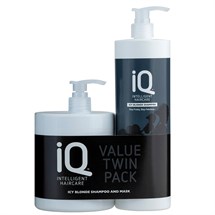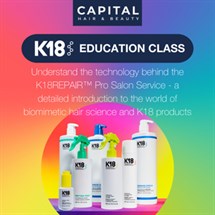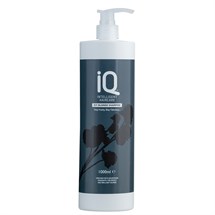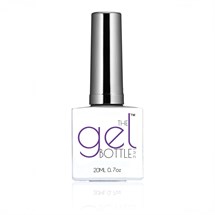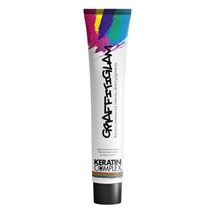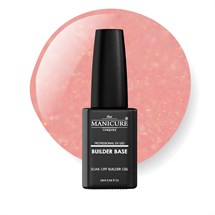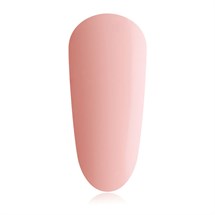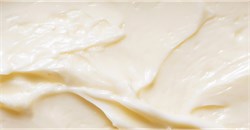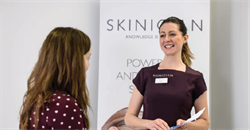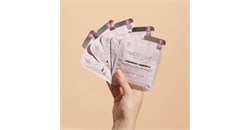Menu

The Acid Test
If the previous year has taught us anything, it's that acids have become a major buzzword in the beauty industry. With so many of them doing so many different things, it's easy to become overwhelmed. Here's our no-nonsense guide to the ones making the biggest impact on skin.
The Basics
Our skin has a thin, protective layer on its surface, referred to as the acid mantle. The pH level of our skin refers to how acidic or alkaline it is. On a scale of 1 - 14, with 1 being the most acidic and 14 being the most alkaline, 7 would be considered neutral for your skin. When it comes to acid-bases products, they will be working at levels closer to 3 and 3.5, so it's important to do your research.
Ascorbic Acid (aka vitamin C)
Vitamin C is not made in the body, so it's something that can only be taken in by the body, or applied topically. It's huge news in the beauty community right now, because it literally helps form our tissues, bones, blood vessels and of course, skin. It's also a powerful antioxidant, making it a winner in serums and creams that can be layered during the day or night. Soon after adding Vitamin C to a skincare regime, skin is brighter, more even and feels firmer.
Capital Buy
Pharmagel Eye Firmé Eye Gel. Give the delicate under-eye area a firming Collagen boost while keeping it protected with soothing Allantoin and anti-inflammatory Echinacea.

Hyaluronic Acid
Hyaluronic Acid molecules are able to carry 1,000 times their weight in water - which is why products containing the 'miracle' ingredient have bombarded the high street over the past five years. There are numerous Hyaluronic serums on the market, and they are most often used after cleansing, and before moisturising, so as to boost the moisturisers' hydrating properties and keep skin softer and smoother for longer. Often described as a 'smart' nutrient, Hyaluronic Acid adjusts its moisture absorption rate based on humidity, resulting in perfectly balanced and hydrated skin, wherever you are.
Capital Buy
BeautyPro Thermotherapy Warming Goil Foil Mask with Hyaluronic Acid & Q10. Use this when a major boost of hydration is needed. The self-warming properties of this 20-minute mask enable the ingredients to penetrate more easily into the skin, leaving it hydrated and smooth. Also, a very similar, man-friendly version is Barber Pro's Skin Renewing Foil Mask.
Retinol (aka vitamin A)
Retinol is what keeps skin looking youthful and plump and comes highly recommended by cosmetic doctors. Put simply, if you were to recommend one addition to your clients' skincare, it would be Retinol.
Increasing the production of collagen - the primary component of the body's connective tissue - and elastin - the component that literally allows our skin to stretch and bounce - Retinol is also brilliant at fighting signs of ageing and sun damage. Known for being very fast-acting, it's important to look at the strength of the Retinol in the products you're recommending. It's definitely something that will require a layer of moisture on top when applied overnight, as it can cause dramatic dryness all over the face, particularly in already dry areas.
Capital Buy
HOF Retinol Vitamin A Night Cream. It's light, non-greasy and penetrates immediately. Or, add a few drops of HOF Retinol Anti-Aging Facial Oil to your existing moisturiser to boost it's effectiveness.

No clue about the differences between Alpha Hydroxy Acids (AHAs) and Beta Hydroxy Acids (BHAs)? Read on.
The most common AHAs?
Glycolic Acid: Celebrity facialist Caroline Hirons calls Glycolic 'a beast of an acid' and it's easy to understand why. The molecules are tine, meaning the ingredient can penetrate far deeper - which also means it can cause more irritation if you overdo it. Glycolic Acid gets right into the pores, decongesting them, getting rid of dead skin cells and repairing the look of skin that has been affected by ageing and sun damage. However, Glycolic Acid isn't always recommended when treating darker skins - instead you might be better working with Mandelic or Lactic Acid-based products.
Lactic Acid: A milk-derived acid, and a bigger molecule, Lactic Acid is more gentle as it sits on the surface of the skin. It's known for leaving skin feeling smoother, softer, refreshed and ready to absorb any products that follow. Great for those with rosacea or sensitive skin.
Mandelic Acid: This is the one to recommend for those with acne because it's anti-bacterial and anti-viral. It has the largest molecule of all the AHAs, meaning it's ideal for using over a longer period.

So, what's the fuss with BHAs?
When it comes to skincare, if you see BHA on a product, it will be Salicylic Acid, something that has long been a go-to for those with problem skin, thanks to its ability to exfoliate without causing irritation, redness or dryness. It's a great ingredient to use little and often, as its effects build up over time. While AHAs loosen the bonds that hold debris in your skin, BHAs actively penetrate the pores to remove whatever junk is there. In short, BHAs are often recommended for oily and acne-prone skin as they are oil-soluble, while AHAs are water-soluble and recommended for those with dry and sensitive skin. When it comes to applying either, they always come after cleansing and toning but before serums and moisturisers.
Capital Buy
Pharmagel Beta-C Dual Action Moisturiser. Perfect for normal/oily skin this is a luxe cream formulated with Salicylic Acid (BHA) and Vitamin C to erase and repair sun damage and signs of ageing.
For a full range of skincare: https://www.capitalhairandbeauty.co.uk/beauty/skincare
New & Trending
NEW
NEW
NEW
NEW
Delivery
Collection
Please login to your account to check stock in your local store.
NEW
NEW
NEW
NEW
Delivery
Collection
Please login to your account to check stock in your local store.
NEW
Freelance Focus
Freelance Focus, is a one stop resource for anyone working as a freelancer or thinking of going freelance in the hair & beauty industry, which includes a FREE downloadable guide filled with advice, useful insights, experiences and tips (from experienced freelancers) to help you understand the steps needed to make the right choices for you.
Back to Posts
Tags
- 2024
- acne
- allergies
- apps
- autumn
- awards
- balayage
- blonde
- braids
- bridal
- brows
- business
- capital & me
- care
- career
- celebrities
- christmas
- chrome
- clean
- collection
- color wow
- colour
- conditioner
- covid-19
- crazy color
- curls
- facial
- fanola
- fashion
- festival
- finance
- floral
- freelance
- gel
- gellux
- get the look
- goldwell
- hair
- halloween
- indola
- interview
- k18
- lashbase
- lashes
- loreal
- loyalty
- make up
- manicure
- marketing
- men
- mens
- mental health
- microblading
- milk_shake
- nail art
- nail trends
- nailart
- nails
- new years
- nioxin
- nxt
- olaplex
- opi
- party
- pedicure
- ponytail
- pulp riot
- redken
- retail
- salon furniture
- salon system
- schwarzkopf
- self-employed
- shampoo
- skincare
- smoothing
- social media
- split-ends
- spring
- step by step
- summer
- sustainability
- tanning
- the met gala
- tigi
- tiktok
- toner
- toning
- top knot
- trends
- tutorial
- updo
- valentines
- veganuary
- wahl
- waxing
- wella
- wellbeing
- winter
Latest Posts
- How to Manage Your Stress for Stress Awareness Month (and Beyond)
- Bridal Hair & Beauty Secrets: Expert Tips from the Duo Behind ‘Bridezilla’
- Week In My Shoes: A Day In The Life Of Shenique Dawkins
- Introducing New Goldwell Light Dimensions SilkLift
- Butter Yellow Is the Colour of the Season
- Vitamino Color Spectrum - Lock In Your Day 1 Colour Vibrancy For Up To 100 Days*
- Week in My Shoes: A Day in the Life of Craig Purves
- Embracing Grey: Expert Tips on Perfecting the Grey Hair Blend Trend
- How to Raise Beauty Prices Without Losing Clients
- Billie Eilish’s Jellyfish Haircut: The Trend Taking Over Salons
Related Posts
Butter Yellow Is the Colour of the Season
As temperatures finally begin to warm up, we’re embracing the newest trend: butter yellow! From hair to nails, to the catwalk, this warm, creamy shade is taking over this season.
Tenniscore: The Tennis Trend Taking Over This Summer 2024
The elegance of classic tennis attire inspires the #tenniscore trend. Think preppy polo tops and crisp cottons, to quintessential tennis whites. The sporty nails trend has inspired people to play with their fashion and accessories,
Skin Cycling 101
If you ever spend time on social media, then you'll definitely have heard about skin cycling, or skin fasting. During the pandemic, this three-step regime rose to popularity as many of us had more time to spend on pursuing our 'perfect' skin. Read on to find out the what and why of skin cycling and how you can build it into your beauty therapy menu.
Skinician Q & A | Your Salon Facial Peel Questions Answered
Introducing Skinician. Skinican offer a range of professional treatments, facial peels and more...
The Ultimate Summer Treatment
Elevate your pedicures this summer with the help of the five-step 02 Fizz Pedi in a Box.
Looking ahead – 2022 trends you’ll love!
It’s time to look to the future and it’s looking bright. Check out the must-have trends from some of the best in the business.
Glam Time!
It’s been a year and a half; now’s the time to bring in the NEW – new brows, new nails, new hair!
Maskne – where do we go from here?
With masks set to be a part of our daily routine for many months to come, we decided to speak to pro’s Emma Kamara Sesay and Ashley Wady, and find out more about what it is, and how to treat it. Read on to find out why a maskne consultation might be the latest addition to your service menu.
